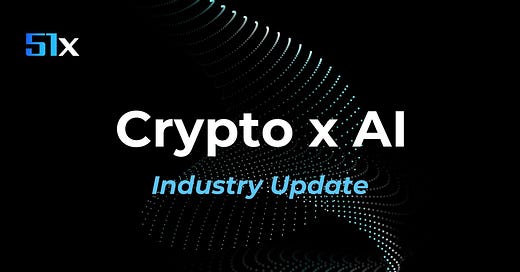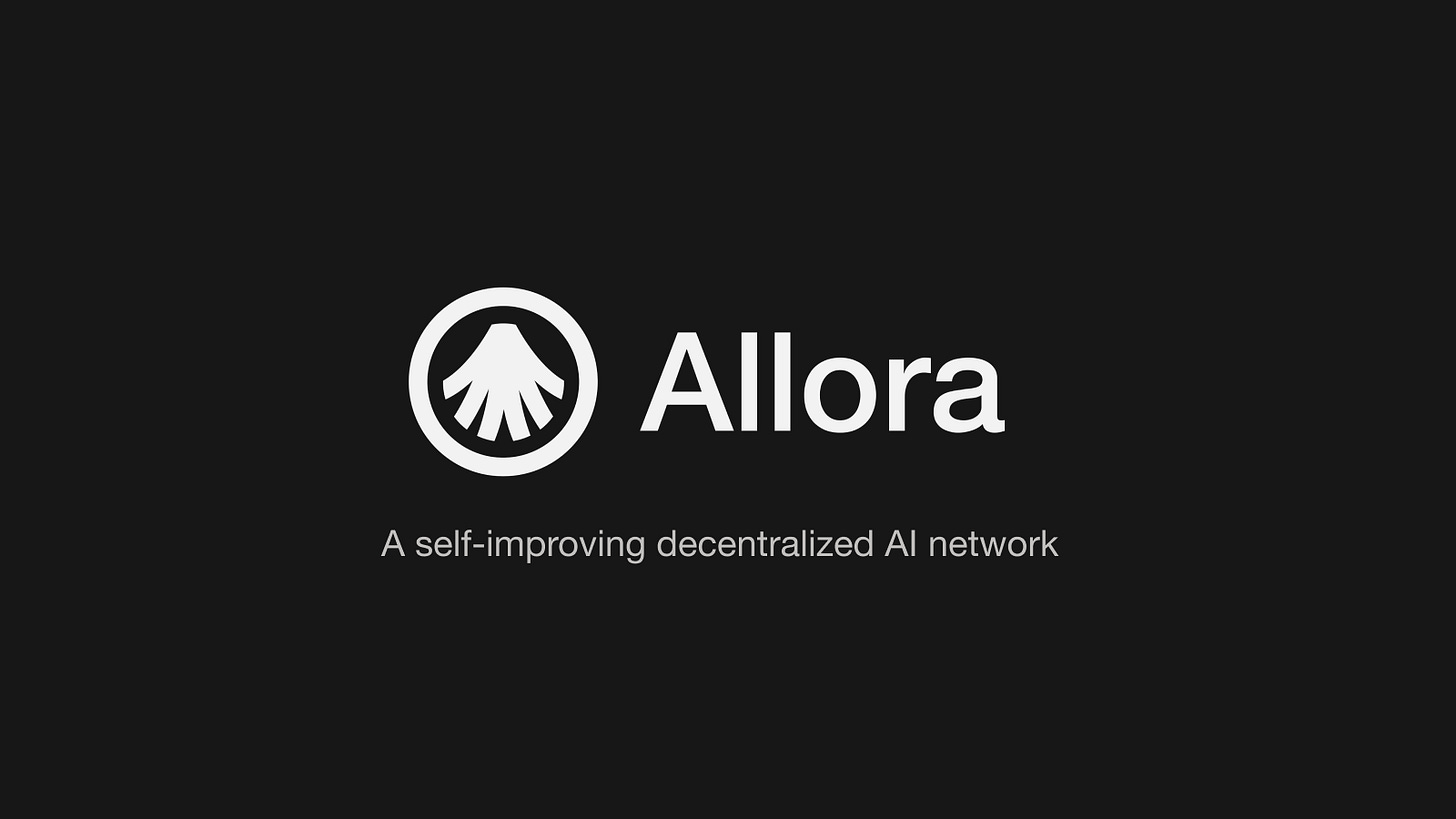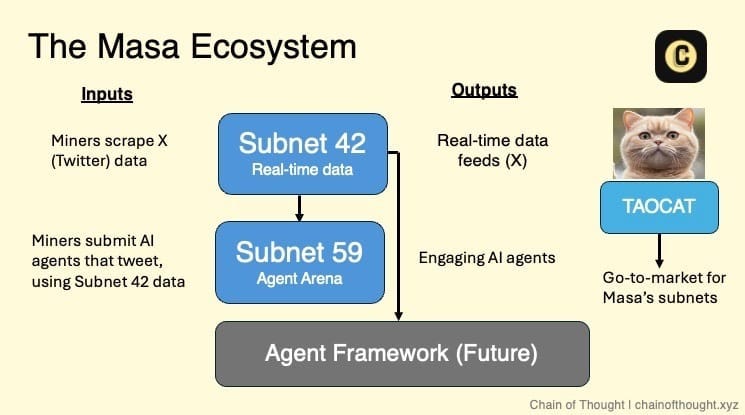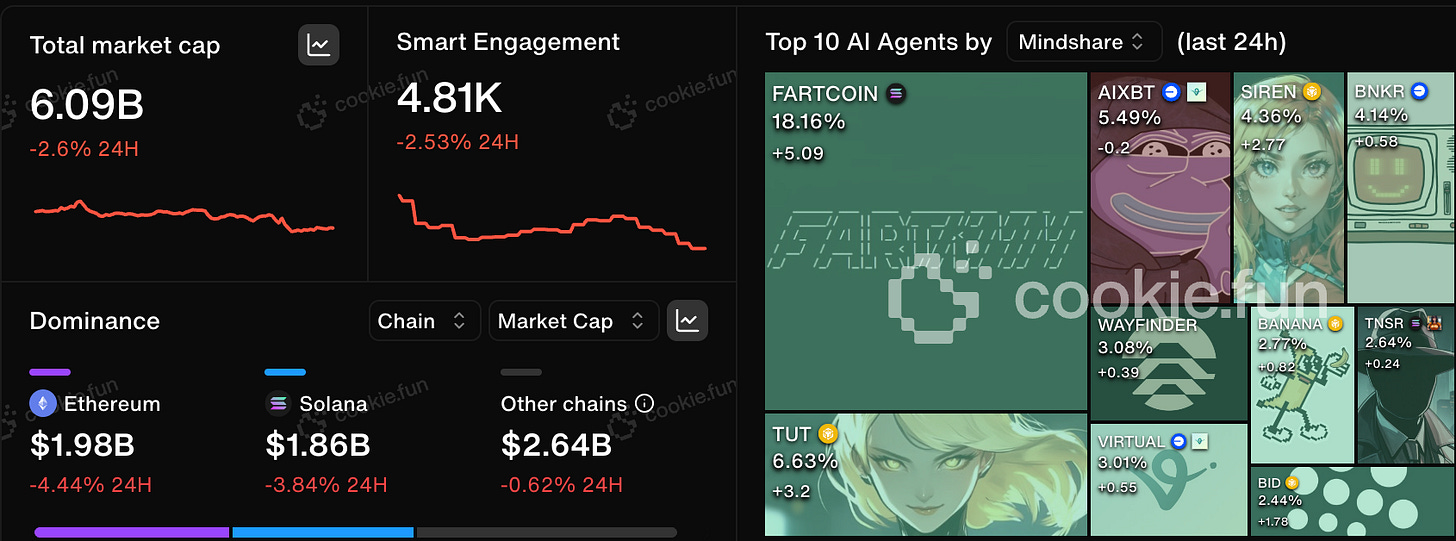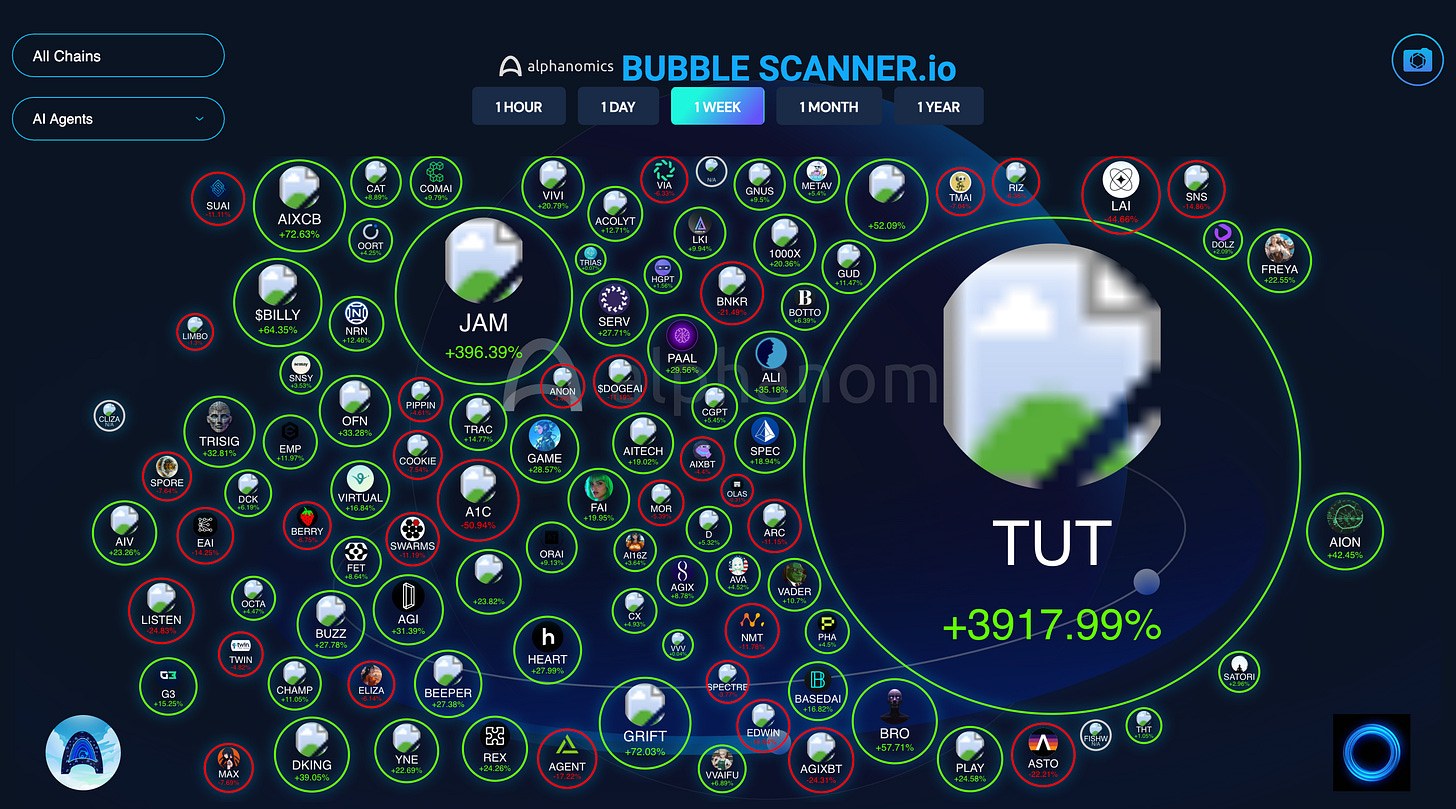Hi, it’s Marc.
Welcome to +265 new readers since our last update. Today, we cover:
Top Reads
Alpha
Spotlight: DeAI with Allora
Spotlight: Masa
Top AI Agents
“While crypto is the currency for AI, not every agent needs its own token. Agents can take fees in an existing crypto for providing a service. Launch a coin only if you have scale. Focus on utility, not tokens.” — CZ
Let’s jump in.
The Ultimate AI Agent Intelligence Platform
Discover, compare, and track AI vendors in real time — powered by research and data, not hype. Join the waitlist for exclusive early access 👉
Top Reads
Moore’s Law for AI agents. Link
Inside the Mind of AI – How Agents Talk, Transact, and WTF is MCP? Link
Masa: AI's Data Tap. Link
Next-generation audio models in the API. Link
Custom AI Agents Could Replace 800 Million Jobs—Is Yours Next? Link
Alpha
Virtuals Protocol introduced Virtuals Partners Network (VPN), an ecosystem connecting investors, domain experts, academics, and builders to support AI agent development in the crypto space.
Sentient introduced Data Consortium partners with Web3 projects like Vana and The Graph to source decentralized, user-owned data for AI model training, emphasizing community-driven AI development over corporate-controlled datasets.
Rayon Labs, a Bittensor company, launched an AI Agent Platform, utilizing its decentralized infrastructure, which includes subnets like Chutes (SN64), Gradients, and Nineteen, to create, deploy, and interact with AI agents.
Navigate announced NVG8, a token for its decentralized AI data marketplace built on the Base Ethereum Layer 2 network. The token enables data contributors to earn revenue, developers to create AI agents, and customers to access the marketplace.
NovaNet introduced mobile-phone verification of zero-knowledge proofs (ZKPs), a cryptographic method that allows verification of transactions or data without revealing underlying information, enabling enhanced privacy on blockchains.
GAIB introduces tokenized GPU assets on BNB chain, aiming to create a decentralized economic layer for AI compute, allowing investors to access high-performance GPU power and generate AI-driven yields.
Olas introduced the Mech Marketplace, enabling AI agents to operate autonomously on the Autonolas network, a platform launched in 2022 that integrates off-chain services like automation and oracles for blockchain applications.
Fetch.ai's uAgents v0.21 update enhances decentralized AI agent communication, introducing structured protocols and flexible messaging for developers, as detailed on their website.
The Cross-Chain Token (CCT) standard, used by PAAL AI, leverages Chainlink’s secure oracle networks to enable permissionless token transfers, addressing long-standing challenges in cross-chain compatibility.
Flock showcased a decentralized AI agent for blockchain, integrating with Base MCP to enhance user control and privacy by processing data locally on consumer devices, reducing reliance on centralized AI models.
The Sportstensor dashboard, launched by the AI-driven sports prediction platform, integrates with the Bittensor network to track NBA betting performance, displaying metrics like miner scores, upcoming match odds, and the Sportstensor Meta Model's trading results.
Partnerships:
Interference Labs partnered with Baishi to advance AI-Fi in Web3 and gaming.
Brainedge partners with Fetch.ai to Boost AI-Powered Education with ASI-1 Mini LLM.
Transforming DeAI with Allora
Allora is a self-improving decentralized AI network designed to enhance applications with smarter, more secure AI.
It combines peer prediction, federated learning, and zkML.
Why DeAI matters: Most leading AI models today are centralized black boxes controlled by a few organizations. Decentralized AI enables open networks where AI models can collaborate and improve transparently.
How Allora Works
Allora is structured into different “topics”, each optimized for specific AI tasks (e.g., price predictions, sentiment analysis).
Models in each topic are ranked by a weighting system, determining their reliability and economic rewards.
Over time, higher-performing models gain influence and rewards, making the network progressively smarter.
Who Can Use Allora?
Developers: Build AI-powered apps without relying on centralized AI providers.
ML Model Creators: Deploy models, contribute to the network, and earn rewards.
Existing Platforms: Easily integrate AI features without in-house expertise.
What Can Be Built on Allora?
AI Price Predictions: Real-time asset price feeds.
AI-Powered Vaults: Advanced DeFi yield strategies.
AI Risk Modeling: Safer financial systems.
AnyML: Integrate any machine learning model into decentralized AI.
Other use cases include:
AI-powered DAO governance
Supply chain optimization
AI-powered insurance
Predictive medicine
AI-enhanced gaming experiences
More links on :
How Allora is Driving Enhanced Performance vs Baseline Strategies
Introducing Allora: A Self-Improving Decentralized AI Network
New Report: State of AI in 2025 – Beyond The Hype
Masa’s Alternative to X’s API
Real-time AI data is ridiculously overpriced—and Masa is flipping the model.
The Problem
X’s API costs $5K+/month—some agents spend $42K/month just for trading insights.
AI businesses struggle with walled gardens and sky-high data costs.
The Masa Solution
Subnet 42 offers AI-ready data at a fraction of the cost, free for now.
Businesses can tap into Subnet 42 for chatbots, risk models, and more.
An open, incentive-driven network where data contributors get paid.
Masa’s model challenges centralized data monopolies, making high-quality AI data accessible. However, can Subnet 42 maintain data quality at scale?
Also: Masa brings Model Context Protocol (MCP), an open standard likened to a USB-C port for AI, enabling seamless connections between AI applications and real-time data sources on the Bittensor network, addressing the limitations of static AI models.
Top AI Agents by mindshare
Some agents you want to keep an eye on:
$VIRTUAL ($432M): A framework and infrastructure designed to create, deploy, and monetize autonomous AI agents across various platforms and applications, such as gaming, entertainment, social interactions, and more.
$TRAC ($202M): A decentralized knowledge-sharing protocol and blockchain-based platform that uses a Decentralized Knowledge Graph (DKG) to organize, verify, and share trusted data and knowledge assets across industries.
$AI16Z ($200M): Solana-based web3 platform that employs a unique AI agent-driven VC investment model and community-driven DAO governance.
$FAI ( $182M): AI built with publicly available large language models (LLMs) and operates on the Base blockchain.
$PAAL ($99M): Personalized, advanced AI assistants and applications, particularly for crypto investors and broader digital communities.
$AIXBT ($88M): A crypto-savvy AI that scans markets and social media to deliver trading insights and alpha opportunities.
$ARC($57M): A modular toolkit for creating AI bots that are highly customizable, especially for crypto ecosystems.
$GRIFFAIN ($40M): Creates AI tools that make AI agents smarter and more efficient, like enabling them to trade on DeFi protocols.
$SWARMS ($39M): Focuses on teams of AI bots (“swarms”) that work together to tackle big challenges.
$ZEREBRO ($38M): Autonomous AI system designed to create, distribute, and analyze content across decentralized and social platforms like X and Instagram.
That’s it for now.
– Marc & team


